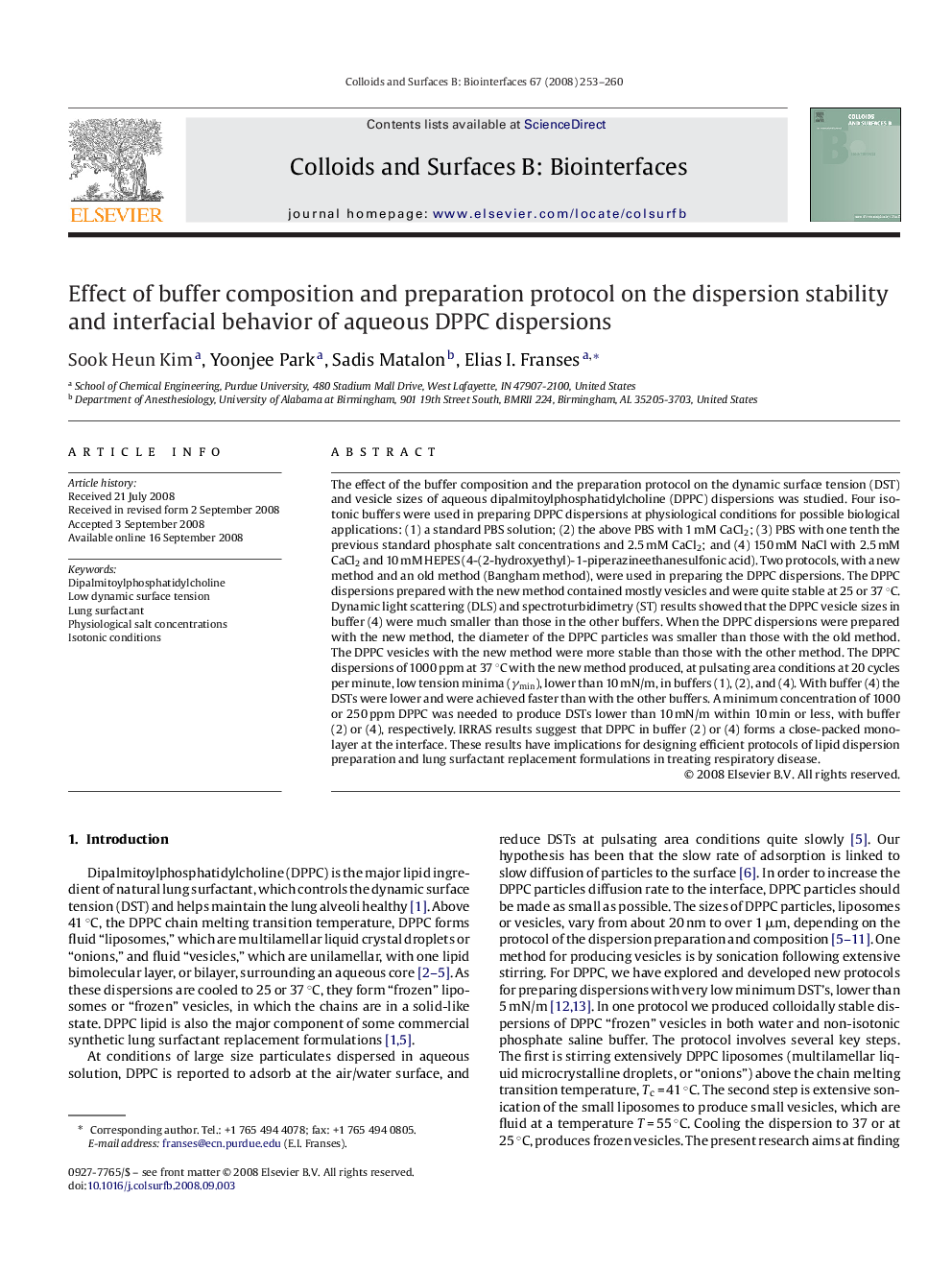| کد مقاله | کد نشریه | سال انتشار | مقاله انگلیسی | نسخه تمام متن |
|---|---|---|---|---|
| 601925 | 879958 | 2008 | 8 صفحه PDF | دانلود رایگان |

The effect of the buffer composition and the preparation protocol on the dynamic surface tension (DST) and vesicle sizes of aqueous dipalmitoylphosphatidylcholine (DPPC) dispersions was studied. Four isotonic buffers were used in preparing DPPC dispersions at physiological conditions for possible biological applications: (1) a standard PBS solution; (2) the above PBS with 1 mM CaCl2; (3) PBS with one tenth the previous standard phosphate salt concentrations and 2.5 mM CaCl2; and (4) 150 mM NaCl with 2.5 mM CaCl2 and 10 mM HEPES (4-(2-hydroxyethyl)-1-piperazineethanesulfonic acid). Two protocols, with a new method and an old method (Bangham method), were used in preparing the DPPC dispersions. The DPPC dispersions prepared with the new method contained mostly vesicles and were quite stable at 25 or 37 °C. Dynamic light scattering (DLS) and spectroturbidimetry (ST) results showed that the DPPC vesicle sizes in buffer (4) were much smaller than those in the other buffers. When the DPPC dispersions were prepared with the new method, the diameter of the DPPC particles was smaller than those with the old method. The DPPC vesicles with the new method were more stable than those with the other method. The DPPC dispersions of 1000 ppm at 37 °C with the new method produced, at pulsating area conditions at 20 cycles per minute, low tension minima (γmin), lower than 10 mN/m, in buffers (1), (2), and (4). With buffer (4) the DSTs were lower and were achieved faster than with the other buffers. A minimum concentration of 1000 or 250 ppm DPPC was needed to produce DSTs lower than 10 mN/m within 10 min or less, with buffer (2) or (4), respectively. IRRAS results suggest that DPPC in buffer (2) or (4) forms a close-packed monolayer at the interface. These results have implications for designing efficient protocols of lipid dispersion preparation and lung surfactant replacement formulations in treating respiratory disease.
Journal: Colloids and Surfaces B: Biointerfaces - Volume 67, Issue 2, 1 December 2008, Pages 253–260